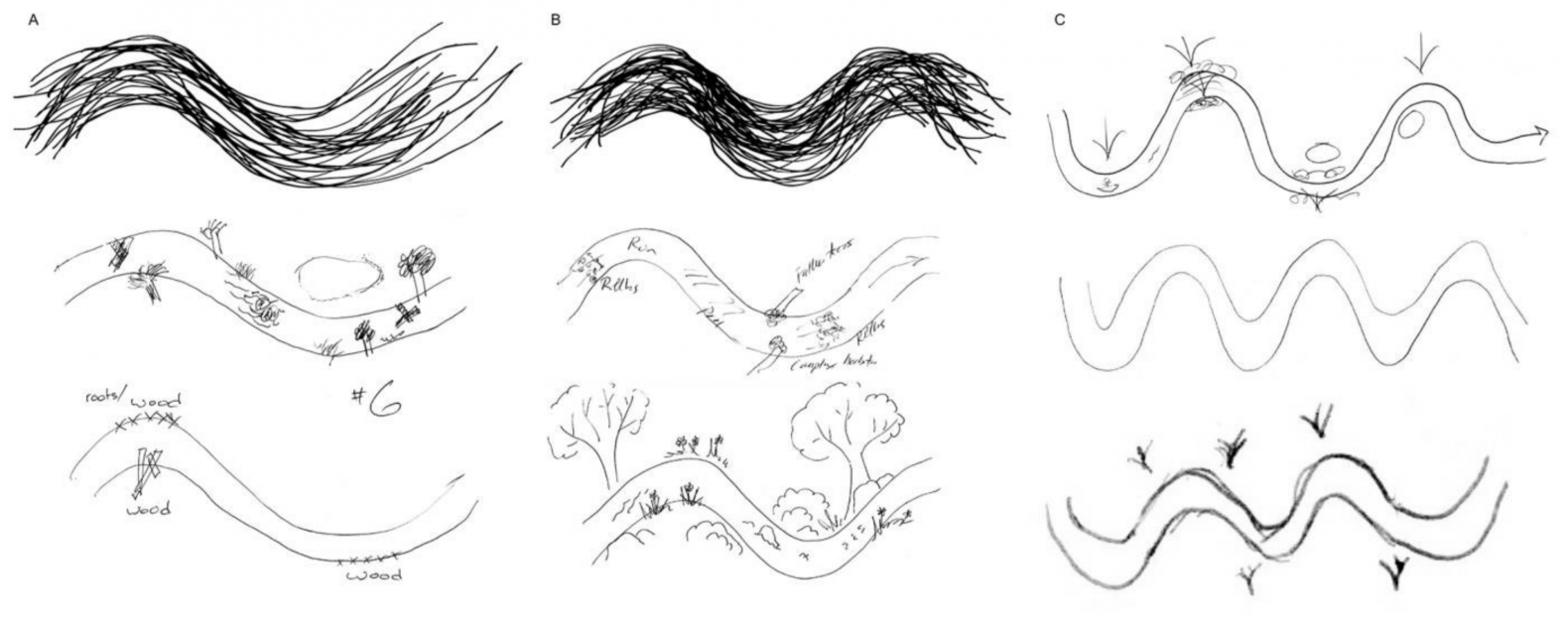River restoration projects in North America that involve reconfiguration of stream channels are dominated by symmetrical, single-thread meandering channels. Although the meander dimensions are commonly justified by relations between channel width and meander wavelength, the universal preference for single-thread meandering channels in restoration projects is rarely questioned. The aesthetic appeal of s-shaped curves in art and landscape design may help explain the prevalence of this form in river restoration projects. Riverlab alumna Kristen Wilson (Nature Conservancy) gave 300 freshwater scientists attending her keynote talk 5 minutes to draw a restored stream. She compiled the results to see what mental images these scientists had for restored channels. Most depicted single-thread meanders for their restored channel, although there were interesting variants. See Kristen’s just-published paper here.
